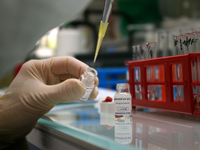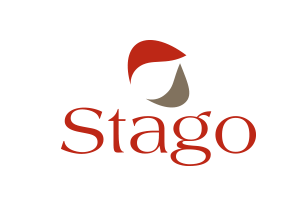The primary mission of the Research & Development (R&D) division of the Stago Group is to design automatic analyzers, reagents, consumables, and services, focused on meeting the needs of healthcare providers, with the goal of improving treatment for clotting disorders and thrombosis. Working alongside the scientific community, R&D also focuses on identifying and studying new markers and methods.
Innovation

- Today, with more than 20% of its staff in Research & Development (R&D) and a level of investment higher than average for the In Vitro Diagnostic (IVD) sector, the Stago Group is determined to innovate in the field of hemostasis and thrombosis, with development teams in instrumentation and reagents, as well as prospective research teams and numerous scientific collaborations with university research teams.
- Since its creation, Stago has consistently developed and introduced methods necessary for quality control, development and industrial production.
- The ability to develop complete systems (instruments + reagents + consumables + services) requires a variety of constantly changing skills, not just at the biological and clinical level, but also in chemistry, physics, mechanics, electronics, fluid science, optics, data processing, statistics and ergonomics, among other fields.
- Finally, Stago must also remain abreast of the changes expected by customers throughout the life cycle of its products. Stago has consequently introduced a system of continuous improvement within its R&D division and in the Industrial & Supply Chain division, in which all of these areas of professional activity play a critical role.
An Outward Looking Policy …
- The world of healthcare and medical technology has witnessed increasingly rapid change over the last 15 years, particularly in biology (genetics, new markers, automation, regulation, etc.). Levels of expertise and know-how have been rising constantly and must continually incorporate the latest advances in order to anticipate future developments. Monitoring of the technological, scientific and medical domains is thus essential to ensure in-house development and integration of these new skills.
- For example, in our sector it is essential to adapt, transfer and develop concepts and technologies from other fields in order to endow our products with key functions and characteristics guaranteeing differentiation (quality, reliability, productivity, precision, ergonomics, etc.).
- Similarly, the acquisition of companies such as BioCytex (1994) for cellular hemostasis and of Thrombinoscope and Synapse (2009) for thrombin generation provide ample evidence of Stago's continuing quest to expand our products scope, skills, and expertise in the hemostasis field.
Synergy with the International Scientific Community
Since 1962, the Stago Group has concentrated its attention on biology, specializing in the "emerging" sector of hemostasis. Thanks to this clear focus, the group is now recognized worldwide by the scientific community.
Stago continues to maintain and develop strong links with the hemostasis community on a day-to-day basis by:
- Initiating and participating in studies with the foremost international university teams, thereby generating numerous scientific publications and communications.
- Organizing regular meetings with leaders in healthcare to better understand their needs while providing them with new tools to ensure quality patient care.
- Proposing topics for collaborative upstream research projects.
